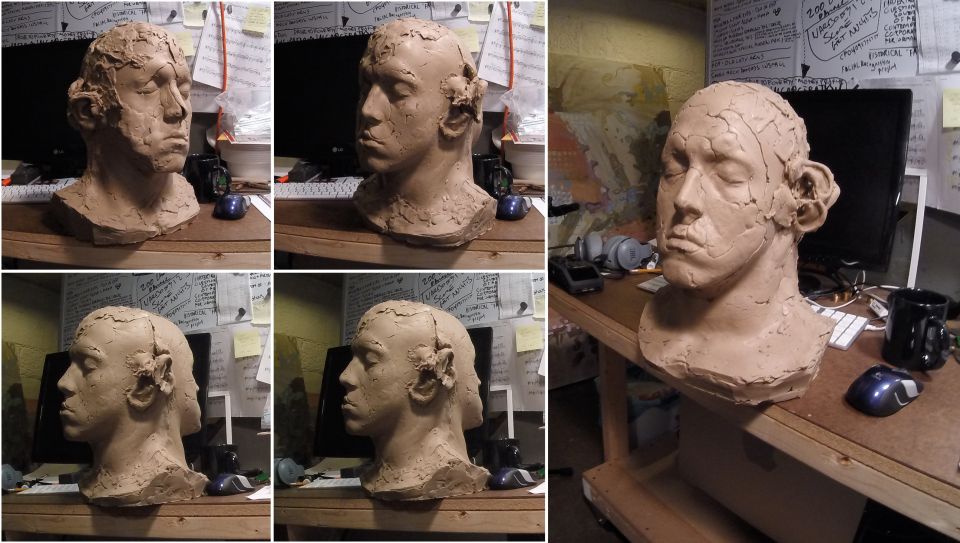Studio
-
Janus bust





Some images of work in progress
I became interested in this symbol. The Roman god "Janus" represents transitions or 'thresholds.' I first used this image in a sculpture called Test Subject 3. Upon investigating the symbol further, I found out that there are associations with Janus's temple and its gates being open during times of war instead of being closed during peacetime. The gates are open during war-time to let the souls of fallen soldiers into the temple.
As the process of making this sculpture began to unfold, I was thinking about what the thing looks like when you make a clay press in this way. I was also thinking about the temple being associated with the 'mind' or 'spirit' - and the fallen soldiers having access to Janus's mind. At this stage, the image looks mashed together from grafted parts, and it's as if elements are bursting out from inside in a few places.
Associations could be made between the government and this image, perhaps (the icon appeared on coins in ancient Rome). I'm also interested in poking a symbolic stick at the question of how accessible the systems put in place for veterans might or might not be. The appearance of the two faces awkwardly stuck together is much like what you'd see in vivisection. It also looks like a treated wound. An attempt to close it is made, but it's still busted open, and the inner elements aren't easily contained. This phenomenon is much like the government's attempt to remain closed while its internal components are continually exposed.
April - 2016
The symbol is somewhat open-ended. It generally has something to do with passages and transitions. The figure would exist where there is a doorway, and both faces can watch over both areas of a possible multiverse.
September - 2017
Investigations and Interactions - This image shows up in Enantiodromia 1: Janus on the Half PipePost a question or comment.
Tom Estlack | Subscribe
Subscribe -
-
Search - Studio
Categories
Chronology



